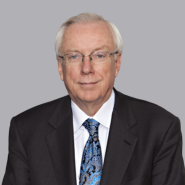The POPR and Expert Declarations
- June 4, 2018
- Article
Associated People
Associated Practices
Associated Technologies
The PTAB in the past year has loosened rules governing IPR practice. In most cases the changes have been good for the process. However, some of the changes while introducing a greater degree of fairness into the system have created traps for the unwary. One such trap is allowing patentees to submit declarations with the POPR (Patent Owner’s Preliminary Response). Contrary to what many practitioners expect, the submission of a declaration actually increases the probability of the petition being instituted. Indeed, it might even guarantee institution.
The submission of a declaration challenging the facts asserted in the petitioner’s declarations actually creates disputed facts which require institution. The PTAB must view the facts in a light most favorable to the petitioner. 37 C.F.R. § 42.108(c). The patent owner’s POPR declaration creates a factual dispute which leaves the PTAB having to credit the petitioner’s facts. The POPR is not intended for the patentee to make out his affirmative case for patentability but to identify failings in the petition favoring denial of institution. That is failings by petitioner to provide sufficient reasons supported by evidence as to why one would modify the prior art to arrive at the claimed invention.
The failing can be: (1) a lack of evidence supporting a declarant’s assertion of obvious to modify; (2) the failure to deal with the patent’s prosecution history where very similar art was considered by the examiner and found lacking; (3) a failure to adequately explain why the prior art is properly combinable; or (4) to address the issue that the proposed combination may render one reference unfit for its intended purpose. This last point emphasizes why an expert’s help in preparing the POPR is essential. A good expert can not only identify combinations which simply do not work but also may be able to identify in the prior art support for the proposition that the modification would render the prior art unfit for its intended purpose.
Other types of evidence that can be used in the POPR are statements in the petitioner’s own patents or file histories, U.S. or foreign, which contradict positions taken in the petition, i.e., admissions against interest. If such statements can be found (we have found them) then the credibility of its expert is seriously impaired and the likelihood of success necessary for institution may not be found. The petitioner cannot claim surprise since they are its own statements which it should have dealt with, if it could, in the petition.
The old adage that one should say never also applies to patentee declarations. There may be situations where such a declaration may be useful in sinking a petition. One such situation is in establishing the date a reference became available. For AIA patents where prior art, with a few exceptions, cannot be antedated, the publication date of a publication may be critical. Simply because a periodical has a month, day and year on its cover does not mean it was available on that date. In some cases it may have distributed days or even weeks after the date on the periodical (or even before). A statement by the publisher as to its actual date of availability is not the type of declaration that creates a factual dispute requiring institution. If the reference is not prior art, then it must be disregarded by the PTAB. A petitioner asserting a reference is prior art where the publication date is close to the patent’s effective filing date should investigate the actual publication date before proceeding.
It is important that a patentee recognize the purpose of the POPR is not present its case for patentability, but to show the petitioner failed to adequately make a case.
Recent Publications
5 IP Rules to Know to Protect Your Business in the United States (article in French)
Coaching INPI Newsletter










 Counseling & Strategic Advice
Counseling & Strategic Advice IP Transactions
IP Transactions Litigation
Litigation PTAB Proceedings
PTAB Proceedings Start-Up
Start-Up Technology Transfer
Technology Transfer Trademark & Designs
Trademark & Designs U.S. Patent Procurement (Application Drafting & Prosecution)
U.S. Patent Procurement (Application Drafting & Prosecution)








